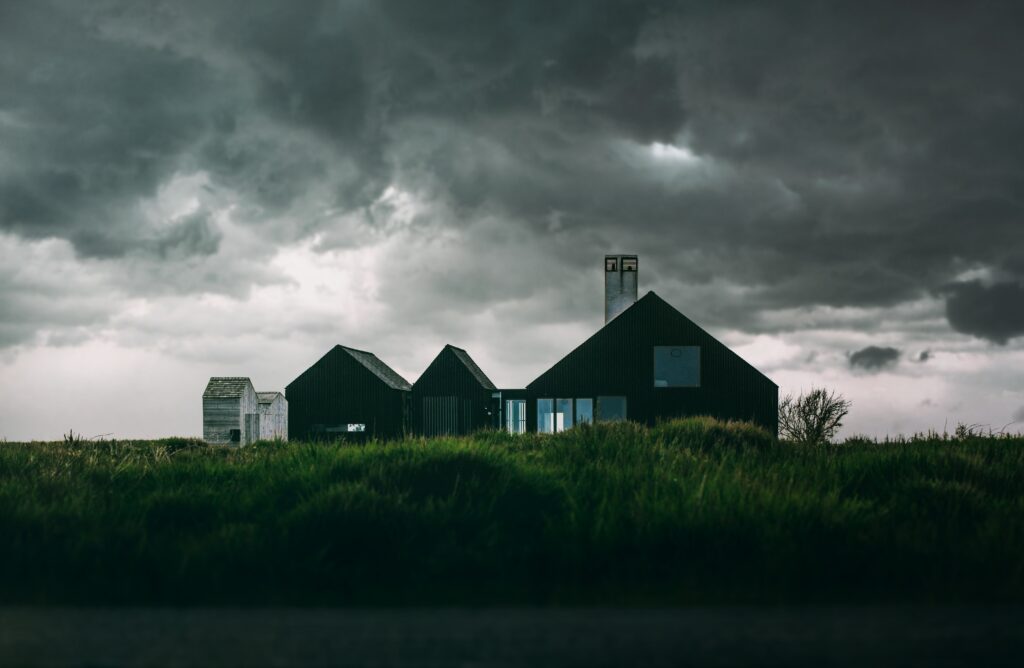
Photo by Alexander Andrews on Unsplash
Depending on where you live, weather can have a significant effect on your home. Weather is known to cause damage to your home. Whether it’s the sun, wind, rain, sleet, snow, or hail, the weather will eventually cause irreparable damage to your house. However, there are many ways to protect your property, and essential for you to be aware of how the weather can damage your property.
There are many different types of weather, each with varying degrees of impact on your home. For instance, snow and ice accumulation may lead to structural cracks and leaks. Hail and high winds can cause significant damage as well as water infiltration. Here are some examples that show what kind of damage these types of storms could cause:
Frozen Pipes
Pipes are most susceptible to freezing when the outdoor temperature is between 20 and 30 degrees Fahrenheit, which is typically the range of temperatures during winter months. If you live in a colder climate or if your home has an older heating system, your pipes may freeze more often.
A few things could contribute to your pipes freezing, such as low water pressure, pipes that have been without heat for a while, or poor insulation.
Flooding
Floods are one of the most devastating natural disasters. It can take an emotional toll on the people who have suffered losses. However, homeowners should remember that there are many steps they can take to lower their risks of experiencing any kind of flood damage.
Water damage is one of the most common consequences of flood damage. It can cover your walls, floors, furniture, and other items in your home. Not only does it make everything look dirty and unsanitary, but it can also cause mold to grow. Molds are dangerous because they release toxic spores that are dangerous to humans. In some cases, it can be more dangerous since mold can go undetected. Therefore, if you experience allergies and rashes, you may want to get a mold test done as soon as possible.
Cleaning flood damage from your home can be difficult if you don’t know what you’re doing. You’ll need to remove all wet furniture and dry it carefully, or things could get worse when the water finally evaporates. You’ll also need to remove any damp carpets or rugs and replace them with dry ones.
Snowfall and Hailstorms
The main threat to your home is the weight of the snow and ice accumulation. The weight of the snow and hail will put pressure on your roof, windows, and doors. This can lead to leaks, shingle punctures, holes, etc., which tend to be enough indications that your roof has storm damage and needs immediate attention. The roof is one of the most important parts of any home and needs to be corrected as soon as there is a noticeable damage to it, so that the residents as well as the possessions inside it remain protected.
Hailstorms are another natural calamity that can harm your car and other vehicles if they aren’t adequately safeguarded. You can keep reading numerous online sources to learn how to fix these problems (for example, dent repair), or you could hire a professional from one of the local vehicle repair companies.
It is imperative that you protect your home from weather damage if you live in an area that experiences drastic weather changes. The weather changes frequently and it can take an unexpected turn that’s not ideal, especially in regions that are prone to hurricanes and storms. In such cases, a weather station (click here to know more) can help you and your loved ones stay safe as this can provide you with real-time weather data and alerts. As a result, you can always be aware of the weather and be prepared to deal with its effects. You can, for example, take preventive measures if you receive a hailstorm alert. This could involve moving outdoor furniture into a safe spot, particularly glass furniture; having your roof inspected; parking in covered spaces; and using hail blankets or specialty car covers.
Another best way to mitigate this risk is by adding storm protection. Storm protection includes having a strong roof, maintaining gutters, and installing storm windows. In addition to this, you can get in touch with a hail restoration service which is a great way to protect your home when it comes to bad weather.
Damp and Mold
Damp and mold can have a significant effect on your home. For example, when you open a window or door to let in cool air from outside, it also lets in humid air from outside. This humid air has little contact with the walls and floors of your home, so it doesn’t evaporate as quickly as dry air would.
This humid air then becomes saturated with water vapor and condenses on cooler surfaces like windows or floors. You can prevent condensation by using dehumidifiers or fans to increase airflow inside your home and ensure that it is properly insulated so you won’t develop dampness or mold., which could have a harmful effect on your health.